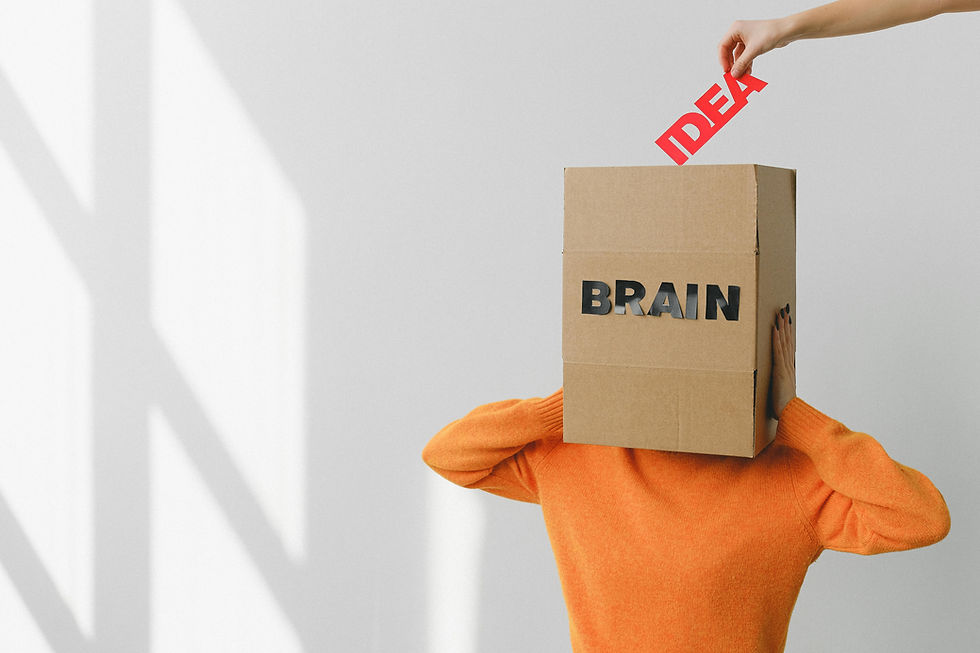
The Healing Canvas: How Art Therapy Transforms Mental Wellbeing
- golsa gholampour
- Apr 8
- 3 min read
In a world where stress and anxiety have become unwelcome companions in our daily lives, art therapy emerges as a powerful yet often overlooked approach to mental wellbeing. As someone passionate about holistic healing methods, I've been fascinated by how simple creative expression can unlock profound therapeutic benefits.
What Exactly Is Art Therapy?
Art therapy is a formal clinical intervention that integrates psychotherapeutic techniques with creative processes. Unlike casual arts and crafts, art therapy is facilitated by trained professionals who use the creative process and resulting artwork to explore feelings, reconcile emotional conflicts, foster self-awareness, and address unresolved trauma.
The American Art Therapy Association defines it as "an integrative mental health and human services profession that enriches the lives of individuals, families, and communities through active art-making, creative process, applied psychological theory, and human experience within a psychotherapeutic relationship."
The Science Behind the Canvas
What makes art therapy particularly fascinating is the growing body of neuroscientific research supporting its effectiveness. When we engage in creative activities:
1. Our brain's reward pathway activates, releasing dopamine that creates feelings of pleasure and motivation.
2. Stress hormones like cortisol measurably decrease. A 2016 study published in the journal Art Therapy found that just 45 minutes of creative activity significantly reduced cortisol levels, regardless of artistic experience or talent.
3. Neural integration improves, meaning different parts of our brain communicate more effectively. This is particularly relevant for processing traumatic experiences, which often become "stuck" in non-verbal parts of the brain.
4. Alpha waves increase, similar to what happens during meditation, promoting a state of relaxed alertness and reduced anxiety.
Who Benefits From Art Therapy?
The beauty of art therapy lies in its versatility. Research has demonstrated its effectiveness across diverse populations:
- Children with developmental or learning disabilities often find expression through art when verbal communication proves challenging.
- Veterans dealing with PTSD can externalize traumatic memories through visual representation, making them more manageable to process.
- Individuals with depression experience improved mood and enhanced self-esteem through creative accomplishment.
- Cancer patients report reduced pain perception and anxiety during treatment.
- Adults with neurodegenerative conditions like Alzheimer's maintain cognitive function and emotional connection through artistic engagement.
Perhaps most importantly, art therapy demolishes the barriers often associated with traditional talk therapy. Many people struggle to verbalize complex emotions, but can readily express them through color, shape, and form.
## Beyond Drawing: The Many Faces of Art Therapy
While drawing and painting might come to mind first, art therapy encompasses numerous modalities:
- Collage work can help reorganize thoughts and create new meaning from existing elements.
- Sculpture and clay modeling provides tactile engagement and three-dimensional problem-solving.
- Photography encourages new perspectives and mindful observation of one's environment.
- Digital art offers precise control and endless revision possibilities, reducing performance anxiety.
Practical Art Therapy Techniques to Try Today
You don't need formal training to begin experiencing the benefits of therapeutic art. Here are three evidence-based exercises you can implement immediately:
1. Emotion Color Wheel
Set aside 15 minutes with some colored pencils or markers and a blank page. Create a circle divided into sections, each representing a different emotion you've experienced today. Choose colors intuitively for each feeling, allowing yourself to blend and layer as needed. This simple practice increases emotional awareness and gives tangible form to internal states.
2. Mindful Mandala
Drawing mandalas (circular, symmetrical designs) has been shown to reduce anxiety and promote focus. Start from the center of your page and work outward with repetitive patterns. There's no right or wrong way to create a mandala—the therapeutic benefit comes from the rhythmic, meditative process rather than the final product.
3. Visual Journaling
Combine brief written reflections with visual elements to process daily experiences. Unlike traditional journaling, the emphasis here is on integrating words with colors, symbols, and images that represent your emotional landscape. This practice builds a bridge between verbal and non-verbal processing, enhancing emotional regulation.
Remember: You don't need to be an artist to benefit from art therapy—you just need to be human.
Art Heals.✨







Comments